Planetary Classifications
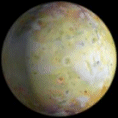 | CLASS A : GEO-THERMALAverage Age: 0-2 billion yearsDiameter: 1,000 - 10,000 km Location: Ecosphere / Cold Zone Surface: Partially molten Atmosphere: Primarily hydrogen compounds Evolution: Cools to become Class-C Life-Forms: None | Planets in this Class: GOTHOS |
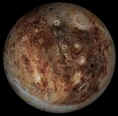 | CLASS B : GEO-MORTEUSAverage Age: 0-10 billion yearsDiameter: 1,000 - 10,000 km Location: Hot Zone Surface: Partially molten, high surface temperature. Atmosphere: Extremely tenuous, few chemically active gases. Life-Forms: None | Planets in this Class: MERCURY |
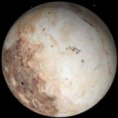 | CLASS C : GEO-INACTIVEAverage Age: 2-10 billion yearsDiameter: 1,000 - 10,000 km Location: Ecosphere / Cold Zone Surface: Low surface temperature Atmosphere: Frozen Life-Forms: None | Planets in this Class: PLUTO |
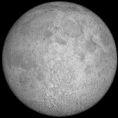 | CLASS D : ASTEROID / MOONAverage Age: 2-10 billion yearsDiameter: 100 - 1,000 km Location: Hot Zone / Ecosphere / Cold Zone; found primarily in orbit of larger planets or in asteroid fields Surface: Barren and cratered Atmosphere: None or very tenuous Life-Forms: None | Planets in this Class: MOON (EARTH) |
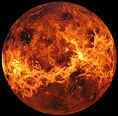 | CLASS E : GEO-PLASTICAverage Age: 0-2 billion yearsDiameter: 10,000 - 15,000 km Location: Ecosphere Surface: Molten, high surface temperature Atmosphere: Hydrogen compounds and reactive gases Evolution: Cools to become Class-F Life-Forms: Carbon-cycle (Excalbian) | Planets in this Class: EXCALIBA |
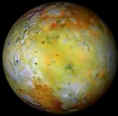 | CLASS F : GEO-METALLICAverage Age: 1-3 billion yearsDiameter: 10,000 - 15,000 km Location: Ecosphere Surface: Volcanic eruptions due to molten core Atmosphere: Hydrogen compounds Evolution: Cools to become Class-G Life-Forms: Silicon-based (Horta) | Planets in this Class: JANUS VI |
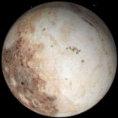 | CLASS G : GEO-CRYSTALLINEAverage Age: 3-4 billion yearsDiameter: 10,000 - 15,000 km Location: Ecosphere Surface: Still crystallizing Atmosphere: Carbon dioxide, some toxic gases Evolution: Cools to become Class-K, L, M, N, O, or P Life-Forms: Primitive single-celled organisms | Planets in this Class: DELTA-VEGA |
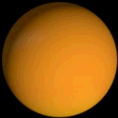 | CLASS H : DESERTAverage Age: 4-10 billions yearsDiameter: 8,000 - 15,000 km Location: Hot Zone / Ecosphere / Cold Zone Surface: Hot and arid, little or no surface water Atmosphere: May contain heavy gases and metal vapors Life-Forms: Drought- and radiation-resistant plants, animal life | Planets in this Class: RIGEL XII |
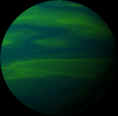 | CLASS I : GAS SUPERGIANTAverage Age: 2-10 billion yearsDiameter: 140,000 - 10 million km Location: Cold Zone Surface: Tenuous, comprised of gaseous hydrogen and hydrogen compounds; radiates heat Atmosphere: Zones vary in temperature, pressure and composition; water vapor may be present Life-Forms: Unknown | Planets in this Class: Q'TAHL |
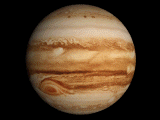 | CLASS J : GAS GIANTAverage Age: 2-10 billion yearsDiameter: 50,000 - 140,000 km Location: Cold Zone Surface: Tenuous, comprised of gaseous hydrogen and hydrogen compounds; radiates some heat Atmosphere: Zones vary in temperature, pressure and composition Life-Forms: Hydrocarbon-based (Jovian) | Planets in this Class: JUPITER |
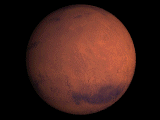 | CLASS K : ADAPTABLEAverage Age: 4-10 billion yearsDiameter: 5,000 - 10,000 km Location: Ecosphere Surface: Barren, little to no surface water Atmosphere: Thin, mostly carbon dioxide Life-Forms: Primitive single-celled organisms; adaptable for humanoid colonization through the use of pressure domes | Planets in this Class: MARS |
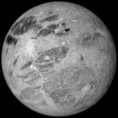 | CLASS L : MARGINALAverage Age: 4-10 billion yearsDiameter: 10,000 - 15,000 km Location: Ecosphere Surface: Rocky and barren, little surface water Atmosphere: Oxygen/argon, high concentration of carbon dioxide Life-Forms: Limited to plant life; suitable for humanoid colonization | Planets in this Class: INDRI VIII |
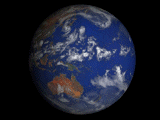 | CLASS M : TERRESTRIAL (Minshara Class)Average Age: 3-10 billion yearsDiameter: 10,000 - 15,000 km Location: Ecosphere Surface: Surface water abundant; if water or ice covers more than 80% of surface, planet is considered Class-O or Class-P Atmosphere: Nitrogen, oxygen, trace elements Life-Forms: Extensive vegetation, animal life, humanoids | Planets in this Class: EARTH |
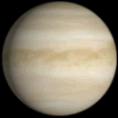 | CLASS N : REDUCINGAverage Age: 3-10 billions yearsDiameter: 10,000 - 15,000 km Location: Ecosphere Surface: High surface temperature due to greenhouse effect; water exists only as vapor Atmosphere: Extremely dense, carbon dioxide and sulfides Life-Forms: Unknown | Planets in this Class: VENUS |
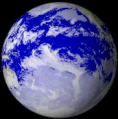 | CLASS O : PELAGICAverage Age: 3-10 billion yearsDiameter: 10,000 - 15,000 km Location: Ecosphere Surface: Liquid water covers 80% or more of surface area Atmosphere: Nitrogen, oxygen, trace elements Life-Forms: Aquatic vegetation, animal life, humanoids | Planets in this Class: ARGO |
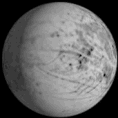 | CLASS P : GLACIATEDAverage Age: 3-10 billion yearsDiameter: 10,000 - 15,000 km Location: Ecosphere Surface: Ice covers 80% or more of surface area Atmosphere: Nitrogen, oxygen, trace elements Life-Forms: Hardy vegetation, animal life, humanoids | Planets in this Class: EXO III |
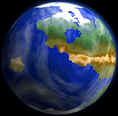 | CLASS Q : VARIABLEAverage Age: 2-10 billion yearsDiameter: 4,000 - 15,000 km Location: Hot Zone / Ecosphere / Cold Zone Surface: Ranges from molten to water and/or carbon dioxide ice, due to eccentric orbit or variable output of star Atmosphere: Ranges from tenuous to very dense Life-Forms: Variable, depending on planetary conditions | Planets in this Class: GENESIS PLANET |
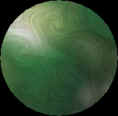 | CLASS R : ROGUEAverage Age: 2-10 billion yearsDiameter: 4,000 - 15,000 km Location: Interstellar space, cometary halos Surface: May be temperate due to geothermal venting Atmosphere: Primarily volcanic gasses Life-Forms: Non-photosynthetic plants, animal life | Planets in this Class: DAKALA |
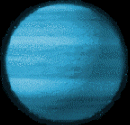 | CLASS T : GAS ULTRAGIANTAverage Age: 2-10 billion yearsDiameter: 10 million - 50 million km Location: Cold Zone Surface: Tenuous, comprised of gaseous hydrogen and hydrogen compounds; radiates some heat Atmosphere: Zones vary in temperature, pressure and composition Life-Forms: Hydrocarbon-based (Jovian) | Planets in this Class: SOKOL VI |
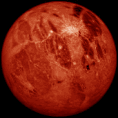 | CLASS Y : DEMONAverage Age: 2-10 billion yearsDiameter: 10,000 - 50,000 km Location: Hot Zone / Ecosphere / Cold Zone Surface: Temperatures can exceed 500°K Atmosphere: Turbulent, saturated with toxic chemicals and thermionic radiation Life-Forms: Heat resistant and highly adaptive | Planets in this Class: THOLIAN HOMEWORLD |
Planetary images created and graciously provided by Adge Cutler [adge.cutler@ntlworld.com]
Civilization Classifications
| Level | Short Definition | Explanation |
| Stone Age | Tools created are made of stone | |
| Copper Age | Tools created are made of copper | |
| Bronze Age | Tools created are made of bronze | |
| Iron Age | Tools created are made of iron | |
| Low Industrial Age | Civilization develops basic machines & tools to help with everyday tasks | |
| Industrial Age | Civilization develops more complex machines & tools to help with everyday tasks | |
| Technological Age | Civilization has discovered computers | |
| Global Age | Civilization has discovered and implemented global technologies | |
| Nuclear Age | Civilization has discovered how to harvest the power of the atom | |
| Space Age | Civilization has begun exploring beyond the confines of its planet | |
| Space Exploration | Civilization has begun exploring beyond the confines of its solar system | |
| Low-Warp | Civilization possesses ships capable of Warp speed up to Warp 3 | |
| Warp | Civilization possesses ships capable of Warp speed up to Warp 6 | |
| High-Warp | Civilization possesses ships capable of Warp speed up to Warp 9 | |
| Trans-Warp Travel | Civilization possesses ships capable of Trans-Warp speed | |
| Ion Age | Civilization has discovered how to harvest ionic energy | |